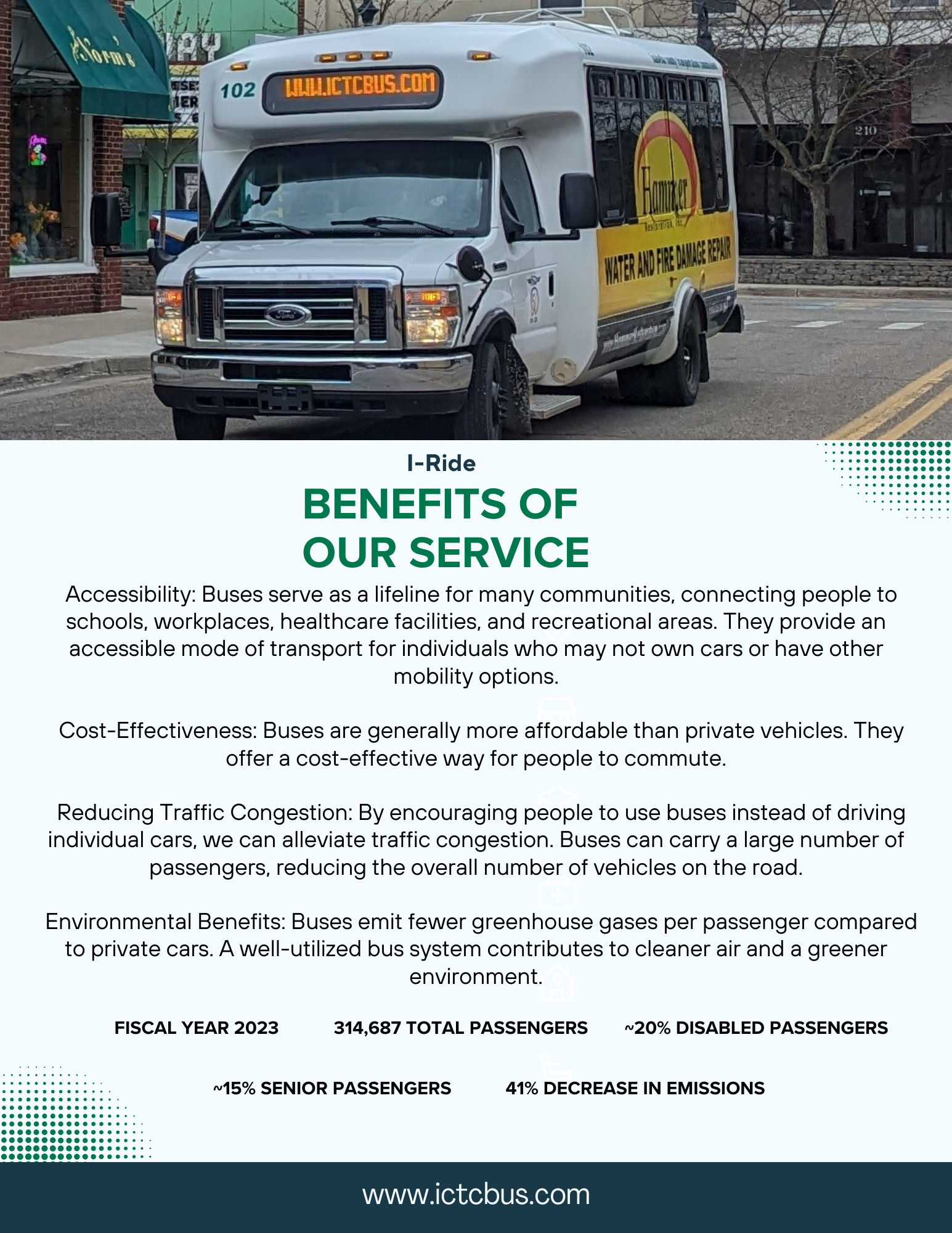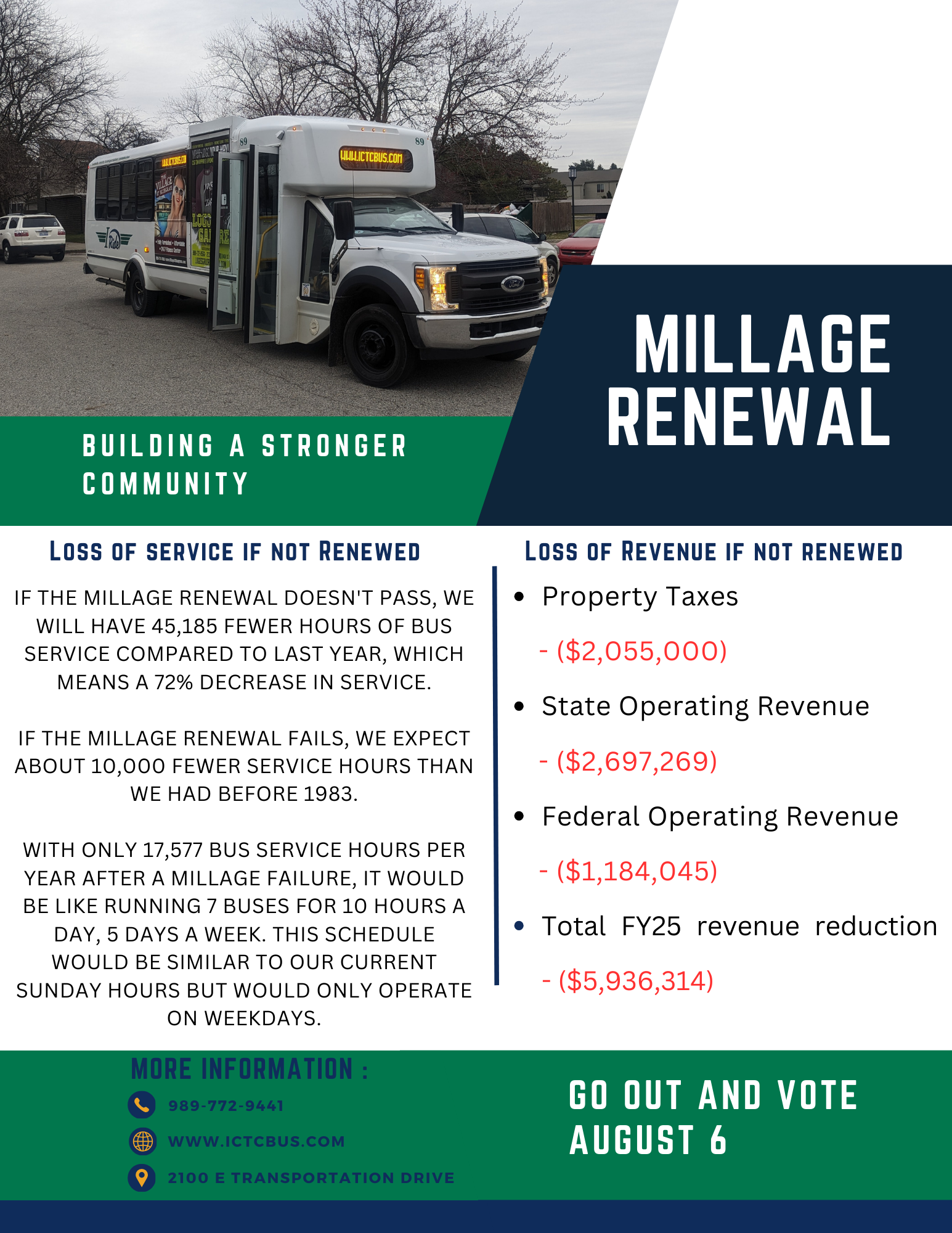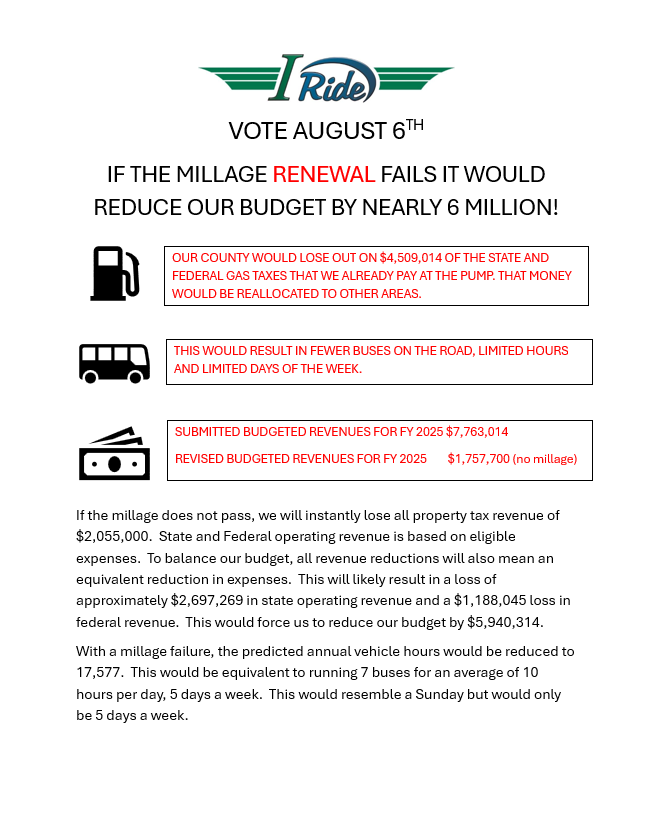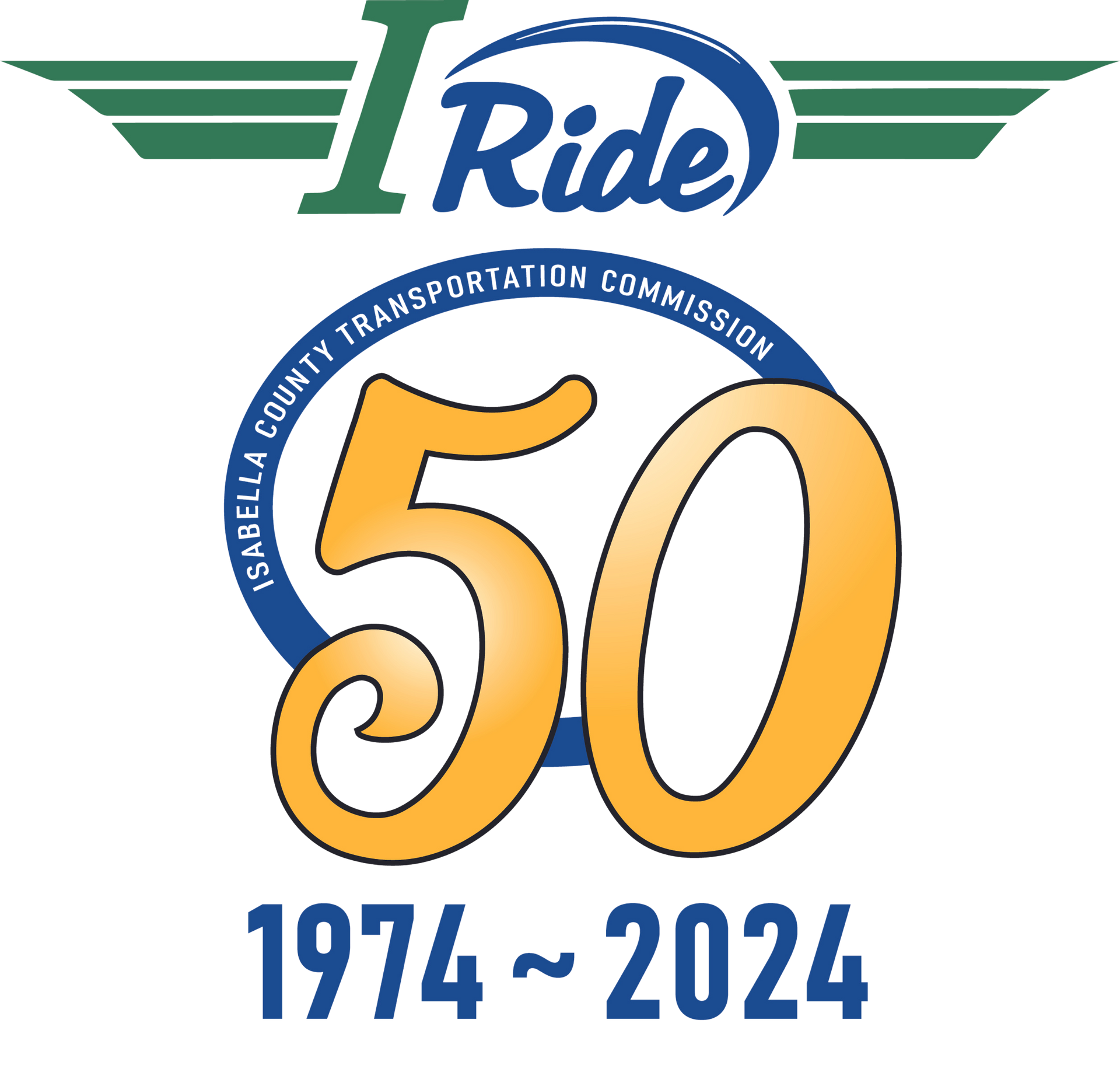Millage 2024 Renewal Q & A
Every four years the Isabella County Transportation Commission (ICTC) must ask for approval from the residents of Isabella County for a millage proposal to support its I-Ride transit operations. The following are some questions and answers concerning this millage renewal request. If you have further questions, you may contact Rick Collins, ICTC Executive Director, at the ICTC business office located at 2100 E. Transportation Drive, Mt. Pleasant, MI 48858, or by calling the ICTC business office at 989-773-2913.
Q - What is ICTC & I-Ride?
A - The Isabella County Transportation Commission (ICTC) is the governing board of I-Ride, your countywide, public transit bus system. In operation since 1974, I-Ride currently operates 360 days a year with a fleet of 43 accessible buses.
I-Ride is not a department of Isabella County. The role of the Isabella County Board of Commissioners is to approve ballot proposal language to be placed on a ballot for our millage renewal and to annually levy up to 1 mil, as approved by you, the voter.
Q - Who uses I-Ride buses?
A - People from all areas of the county use I-Ride. The transportation dependent, the elderly, those with disabilities and youth make up the majority of riders. Riders of choice, adults using I-Ride services to get to work, educational services, to appointments and to shop, make up the balance of riders.
Ridership in the immediate Mt. Pleasant area accounts for most service requests, however the ridership in the county areas is now the fastest growing service segment.
Q - Why does I-Ride need its millage request?
A - Public transportation systems are funded by state and federal matching funds and local income, (fare-box revenues & contract services) and tax support in the form of a local millage. The federal and state funds are collected through fuel taxes and auto related sales tax earmarked for public transportation. To receive our share of these State and Federal taxes we must provide local matching funds. Without a local transit operation, taxes earmarked for transportation collected from Isabella County residents would be spent in another community.
Over the last several years decreasing State funds have resulted in a loss in state revenues to I-Ride! ICTC has made significant changes to deal with this loss of revenue. Service has been restructured, vacated positions have not been filled, reducing costs by attrition. In today’s economic climate, losing millage support would force drastic reductions in service, hurting those most in need, specifically children, the elderly, people with disabilities and those on fixed incomes. With the approaching “boomer’” generation reaching retirement age, public transportation increases in importance in maintaining independence for older Americans, especially those in rural areas.
Q- Is this the same rate I’ve paid in the past?
A - Yes, this is a renewal request to continue funding at the current level.
Q- How much would this millage proposal cost me?
A - The language means you would be assessed $1 for each $1000 of State Equalized Evaluation (SEV) on your property, less the Headlee Amendment rollback.
An example showing the cost under this 1 mil renewal proposal:
Market Value: $100,000
SEV: $75,000
ICTC cost at 1 mil: less than $75/year
The County Board of Commissioners currently assessed .862 mil thereby reducing the cost to approximately $43/year. I-Ride has been assessed .862 mil for the last 14 years.
Q- Why should I pay an I-Ride millage if I don’t ride the bus?
A - For the same reason you pay for public safety, public roads, public parks and other services; so they will be there when you need them. You may need to use the bus when your car is being repaired. Your children and/or babysitter may need service after school. Your parents (and eventually you) may need the bus as age, illness and/or fixed income force a change in driving habits. The overall quality of life and potential for growth are enhanced with a good public transportation system. Across the country public transportation has been shown to be a significant economic development tool.
Q – What does the phrase at the end of the ballot proposal mean?
A – The last sentence for the I-Ride millage proposal states, “In accordance with State law, a portion of the millage may also be disbursed to the Downtown Development Authorities of the Cities of Clare, Mt. Pleasant and Union Township; the Local Development Finance Authority of the City of Clare; the Tax increment Finance Authorities of the City of Mt. Pleasant; the Brownstone Redevelopment Authorities of Mt. Pleasant.
Simply put, this means any property this millage is applied to within the legally defined areas of a TIFA district or Brownstone Redevelopment district Isabella County, allows the TIFA or Brownstone district to access a small portion of collected revenues for the purposes for which these entities were designed. These disbursements only affect those properties within the afore-mentioned boundaries, usually business districts or redevelopment areas. If you live in rural Isabella County or in residential areas of these municipalities, none of your ICTC millage would be disbursed to these entities. Also remember, a few hundred feet of the City of Clare is in the very north portion of Isabella County, which is why it appears that a city outside of Isabella County may have access to these funds, but only for use on, and applied to, these properties within Isabella County.
Benefits of Our Service
Accessibility: Buses serve as a lifeline for many communities, connecting people to schools, workplaces, healthcare facilities, and recreational areas. They provide an accessible mode of transport for individuals who may not own cars or have other mobility options.
Cost-Effectiveness: Buses are generally more affordable than private vehicles. They offer a cost-effective way for people to commute.
Reducing Traffic Congestion: By encouraging people to use buses instead of driving individual cars, we can alleviate traffic congestion. Buses can carry a large number of passengers, reducing the overall number of vehicles on the road.
Environmental Benefits: Buses emit fewer greenhouse gases per passenger compared to private cars. A well-utilized bus system contributes to cleaner air and a greener environment.




